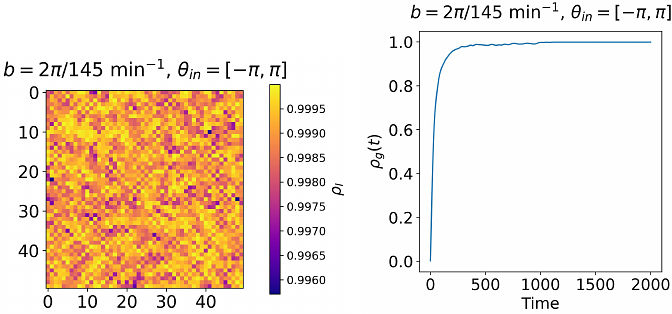Foci, waves, excitability : self-organization of phase waves in a model of asymmetrically coupled embryonic oscillators

Foci, waves, excitability : self-organization of phase waves in a model of asymmetrically coupled embryonic oscillators
Roy, K.; Francois, P.
AbstractThe \'segmentation clock\' is an emergent embryonic oscillator that controls the periodic formation of vertebrae precursors (or somites). It relies on the self-organization at the Pre Somitic Mesoderm (PSM) level of multiple coupled cellular oscillators. Dissociation-reaggregation experiments have further revealed that ensembles made of such cellular oscillators self-organize into an oscillatory bidimensional system, showing concentric waves around multiple foci. Here, we systematically study the dynamics of a two dimensional lattice of phase oscillators locally coupled to their nearest neighbors through a biharmonic coupling function, of the form sin {theta} + {Lambda} sin2 {theta}. This coupling was inferred from the Phase Response Curve (PRC) of entrainment experiments on cell cultures, leading to the formulation of a minimal Elliptic Radial Isochron Cycle (ERIC) phase model. We show that such ERIC-based coupling parsimoniously explains the emergence of self-organized concentric phase wave patterns around multiple foci, for a range of weak couplings and wide distributions of initial random phases, closely mimicking experimental conditions. We further study extended modalities of this problem to derive an atlas of possible behaviors. In particular, we predict the dominant observation of spirals over target wave patterns for initial phase distributions wider than approximately {pi}. Since PSM cells further display properties of an excitable system, we also introduce excitability into our simple model, and show that it also supports the observation of concentric phase waves for the conditions of the experiment. Our work suggests important modifications that can be made to the simple phase model with Kuramoto coupling, that can provide further layers of complexity and can aid in the explanation of the spatial aspects of self-organization in the segmentation clock.


